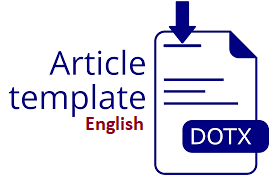Deteksi Jenis Penyakit Pada Tanaman Padi Menggunakan Yolo V5
DOI:
https://doi.org/10.30865/klik.v5i1.2009Keywords:
Disease in rice; YOLO v5; EpochAbstract
The problem of disease in rice plants is an obstacle faced by farmers after planting. One of the rice diseases that really worries farmers is disease brown spot, Bacterial Blight, and blast, which causes the leaves to turn yellow prematurely, spots and rice stalks rot. One farmer in Parigi Village whose rice field was attacked by disease suffered a loss of Rp. 6,000,000 to Rp. 8,000,000 per hectare. From all the rice fields of Parigi Village residents. This research aims to detect types of disease in rice plants by applying methods deep learning using YOLO v5 (You only Look Once). The trained model is able to recognize Brown Spot, Bacterial Blight and Blast diseases with a high level of accuracy. In this analysis, two epochs stand out as the best candidates, namely epoch 250 and epoch 200. At epoch 250, the model shows the highest precision (0.802) and a strong mAP@0.5 value (0.702), indicating excellent model performance without overfitting. Meanwhile, at epoch 200, although precision and recall were slightly lower, the highest mAP@0.5:0.95 value (0.393) indicated better generalization ability. Based on these metrics, epoch 150 is identified as the optimal epoch, although epoch 200 also shows strong performance, especially in generalization over a wide range of threshold IoU. The calculation results show the following performance metrics: Precision: 92.5%; Recall: 90.8%; F1-Score: 91.6%; Mean Average Precision (mAP): 93.2%.
Downloads
References
N. Hikmah and A. Khumaidi, “RANCANG BANGUN PROTOTIPE PENGUSIR HAMA BURUNG MENGGUNAKAN SENSOR GERAK RCWL MICROWAVE BERBASIS INTERNET OF THINGS,” Jurnal SIMETRIS, vol. 11, no. 2, 2020.
ADEN BAYU RESPATI1, MUHAMAD NURDIN YUSUF, and DANI LUKMAN HAKIM, “ANALISIS SALURAN PEMASARAN KOMODITAS PADI (Studi Kasus di Desa Selasari Kecamatan Parigi Kabupaten Pangandaran),” 2020.
J. Juswadi, P. Sumarna, and N. S. Mulyati, “Keragaan Produktivitas Padi Sawah Jawa Barat Dan Faktor Yang Mempengaruhinya,” Paspalum: Jurnal Ilmiah Pertanian, vol. 8, no. 2, p. 122, Sep. 2020, doi: 10.35138/paspalum.v8i2.199.
S. M. Sudarjat1, Vijaya Isnaniawardhani, and Muhammad Abdillah Hasan Qonit, “Sosialisasi Pengendalian Hama Terpadu di Desa Cintaratu Kecamatan Parigi Kabupaten Pangandaran,” 2020.
A. F. Isma, M. JT Siagian, and M. A. Muthalib, “Prototipe Teknologi Tepat Guna Bertenaga Cahaya Matahari Pengusir Hama Burung Berbasis Smartphone dan Arduino Uno,” Jurnal Teknik Elektro dan Komputasi (ELKOM), vol. 5, no. 1, pp. 38–44, Mar. 2023, doi: 10.32528/elkom.v5i1.9192.
“BADAN PUSAT STATISTIK KABUPATEN CIAMIS BPS-STATISTICS OF CIAMIS REGENCY.”
J. Juswadi, P. Sumarna, and N. S. Mulyati, “Keragaan Produktivitas Padi Sawah Jawa Barat Dan Faktor Yang Mempengaruhinya,” Paspalum: Jurnal Ilmiah Pertanian, vol. 8, no. 2, p. 122, Sep. 2020, doi: 10.35138/paspalum.v8i2.199.
J. Lintar Balle et al., “Implementasi alat pengusir hama sawah dengan cara tradisional dan modern bertenaga surya menggunakan sensor PIR berbasis Android Implementation of rice field pest repellents in a way traditional and modern solar powered using an Android-based PIR sensor,” 2021.
ersandy, Novi Lestari, and Lukman Sunardi, “INTERNET OF THING PENGUSIR HAMA BURUNG PEMAKAN PADI PADA KOMUNITAS PERSAWAHAN SRI REJEKI,” 2022.
K. A. Baihaqi and C. Zonyfar, “Deteksi Lahan Pertanian Yang Terdampak Hama Tikus Menggunakan Yolo v5,” 2022.
J. Deng et al., “Deep-Learning-Based Rice Disease and Insect Pest Detection on a Mobile Phone,” Agronomy, vol. 13, no. 8, pp. 1–20, 2023, doi: 10.3390/agronomy13082139.
L. Suroiyah, Y. Rahmawati, and R. Dijaya, “FACEMASK DETECTION USING YOLO V5,” Jurnal Teknik Informatika (Jutif), vol. 4, no. 6, pp. 1277–1286, Dec. 2023, doi: 10.52436/1.jutif.2023.4.6.1043.
Hasbi Dawami, Mahmud Dwi Sulistiyo, and Ema Rachmawati, “Deteksi Penggunaan Masker Wajah Menggunakan YOLOv5,” 2023.
S. Yuliany, Aradea, and Andi Nur Rachman, “Implementasi Deep Learning pada Sistem Klasifikasi Hama Tanaman Padi Menggunakan Metode Convolutional Neural Network (CNN),” Jurnal Buana Informatika, vol. 13, no. 1, pp. 54–65, 2022, doi: 10.24002/jbi.v13i1.5022.
S. R. D. Amiril, “Implementasi Algoritma Convolutional Neural Network Pada Klasifikasi Penyakit Padi Melalui Citra Daun,” Dspace.Uii.Ac.Id, p. 23, 2020, [Online]. Available: https://dspace.uii.ac.id/handle/123456789/30189%0Ahttps://dspace.uii.ac.id/bitstream/handle/123456789/30189/16611043 Siti Rahmah Danur Amiril.pdf?sequence=1
ADEN BAYU RESPATI1, MUHAMAD NURDIN YUSUF, and DANI LUKMAN HAKIM, “ANALISIS SALURAN PEMASARAN KOMODITAS PADI (Studi Kasus di Desa Selasari Kecamatan Parigi Kabupaten Pangandaran),” 2020.
Adi Rizky Pratama, Ayu Ratna Juwita, and Tohirin Al Mudzakir, “Klasifikasi Daging Sapi Berdasarkan Ciri Warna Dengan Metode Otsu dan K-Nearest Neighbor,” 2021.
N. M. Yasen et al., “Pemanfaatan Yolo Untuk Deteksi Hama Dan Penyakit Pada Daun Cabai Menggunakan Metode Deep Learning,” vol. 15, pp. 63–71, 2023.
S. Indra Maiyanti et al., “Perbandingan Klasifikasi Penyakit Kanker Paru-paru menggunakan Support Vector Machine dan K-Nearest Neighbor,” vol. 18, no. 1, 2023, doi: 10.33998/processor.2023.18.1.700.
S. Suhendar, A. Purnama, and E. Fauzi, “Deteksi Penyakit Pada Daun Tanaman Ubi Jalar Menggunakan Metode Convolutional Neural Network,” Jurnal Ilmiah Informatika Global, vol. 14, no. 3, pp. 62–67, 2023, doi: 10.36982/jiig.v14i3.3478.
I. Nugraha Pratama, T. Rohana, T. Al Mudzakir, and P. Karawang, “PENGENALAN SAMPAH PLASTIK DENGAN MODEL CONVOLUTIONAL NEURAL NETWORK,” 2020.
J. H. Kim, N. Kim, Y. W. Park, and C. S. Won, “Object Detection and Classification Based on YOLO-V5 with Improved Maritime Dataset,” J Mar Sci Eng, vol. 10, no. 3, Mar. 2022, doi: 10.3390/jmse10030377.
D. I. Mulyana and M. A. Rofik, “Implementasi Deteksi Real Time Klasifikasi Jenis Kendaraan Di Indonesia Menggunakan Metode YOLOV5,” 2022.
S. R. D. Amiril, “Implementasi Algoritma Convolutional Neural Network Pada Klasifikasi Penyakit Padi Melalui Citra Daun,” Dspace.Uii.Ac.Id, p. 23, 2020.
D. Ruwandara, M. Jajuli, and A. Rizal, “Analisis Algoritma K-Means Clustering Untuk Daerah Penyebaran Sampah di Kota Bekasi,” JOINS (Journal of Information System), vol. 6, no. 1, pp. 56–63, May 2021, doi: 10.33633/joins.v6i1.4085.
N. Saefulloh, J. Indra, and A. Ratna Juwita, “Implementasi Algoritma Convolutional Neural Network (CNN) Untuk Klasifikasi Kecacatan Pada Proses Welding di Perusahaan Manufacturing,” Technology and Science (BITS), vol. 6, no. 1, pp. 387–394, 2024, doi: 10.47065/bits.v6i1.5321.
D. Darmadi, P. Pratikso, and M. Rachmat, “Survei Volume Lalulintas Dengan Internet Of Thing Yolo-V5,” J Teknol, vol. 11, no. 1, pp. 25–35, Nov. 2023, doi: 10.31479/jtek.v11i1.276.
Bila bermanfaat silahkan share artikel ini
Berikan Komentar Anda terhadap artikel Deteksi Jenis Penyakit Pada Tanaman Padi Menggunakan Yolo V5
ARTICLE HISTORY
Issue
Section
Copyright (c) 2024 Muhammad Deden Miftah Fauzi, Tohirin Al Mudzakir, Cici Emilia Sukmawati, Jamaludin Indra

This work is licensed under a Creative Commons Attribution 4.0 International License.
Authors who publish with this journal agree to the following terms:
- Authors retain copyright and grant the journal right of first publication with the work simultaneously licensed under Creative Commons Attribution 4.0 International License that allows others to share the work with an acknowledgment of the work's authorship and initial publication in this journal.
- Authors are able to enter into separate, additional contractual arrangements for the non-exclusive distribution of the journal's published version of the work (e.g., post it to an institutional repository or publish it in a book), with an acknowledgment of its initial publication in this journal.
- Authors are permitted and encouraged to post their work online (e.g., in institutional repositories or on their website) prior to and during the submission process, as it can lead to productive exchanges, as well as earlier and greater citation of published work (Refer to The Effect of Open Access).
















